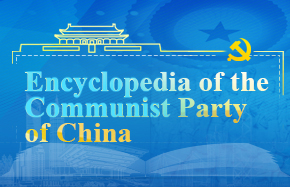Africa's urbanization laboratory
The continent's planners can see what works and what needs improvement by examining the unprecedented growth of cities in China
China's urbanization in the past 30 years is unprecedented both in speed and scale. There were about 200 cities and 3,000 towns by the end of the 1970s. Now there are 655 cities and about 23,000 towns.
China's urbanization rate reached 53.7 percent by the end of 2013, above the world's average rate of 50 percent.
It is inevitable that this trend has greatly changed China's economy and society and greatly impacted the environment and resources. Some of the biggest challenges China is facing today are caused by urbanization.
There are several things African cities can learn from China as they go through the urbanization process.
The first is the importance of optimizing the urban structure, or the arrangement of land use. An efficient and reasonable urban structure can bring long-term benefits to a city, whereas a poor one may cause harm. In a fast-developing market, the utilization of land and space can be easily manipulated to serve short-term economic interests. Once the structure of a city is formed, one can do little to correct it.
Every city should develop a strategy tailored to its own situation.
Generally speaking, big cities, especially megacities, must avoid sprawling into too large an area. They should limit the central areas to a reasonable scale. New towns and cities can be developed in the periphery to accommodate expanding population and industries. This method helps the cities to be more efficient and livable. It provides space for the development and upgrading of industries. It also makes sure that cities are developing in a workable scale while leaving necessary ecological spaces between urbanized areas.
For middle and small-sized cities, they should consider geographical and natural features more in their planning.
One problem caused by urbanization in China is that we are gradually losing the local cultural and historical traits that are the foundation of a city's competitiveness and significant to human civilization. This is the second lesson Africa should learn from China. That's why we need to make the protection of historical and cultural heritage an integral part of urban planning.
Thirdly, fully equipped infrastructure is the premise of a city's efficient functioning and must be given top priority in urban planning.
We should also leave enough space for future infrastructure construction. This is because infrastructure is supported by economic development. If we start looking for the space only after we have enough economic capability to do future infrastructure, resources will be wasted. We may also face difficulties in relocating residents.
Along those lines is prioritization of public transport. Private transport, which is predominant in many Western countries, particularly the United States, has created huge environmental problems as well as many problems for the world's sustainable development.
Private transport shouldn't become the mainstream means of transportation or the symbol of the ideal life. Promoting public transport, which is effective, convenient and sustainable for all people, is by far the best choice.
Fifth, the importance of the ecology should be emphasized. Cities need green space in their surrounding areas and downtowns as well. Green space in the city should not be just ornamental. It should be public space open to all citizens. Megacities have multiple centers, and there should be ecological networks between these centers. Preservation of farmland should be integrated into this green-oriented construction of cities. Also, if we restore the natural water systems in the cities, it can pay dividends for the public and for the environment.
During the rapid urbanization of China, a great number of people who originally lived in rural areas have moved into cities. However, living standards remain at a low level in the newly built small cities and towns because of the poor public service systems, out-of-date infrastructure and a lack of pillar industries.
People go to large and middle-sized cities for a better life. Although this massing of population in big cities has been one of the drivers of China's consistent and rapid economic growth, it also has brought problems with housing, the environment, transportation and resources, problems that in big cities are tough to tackle.
Middle and small-sized cities should be developed at the same pace as big cities. We also need a strong mechanism to coordinate development between regions, cities and rural areas.
Cities are becoming integrated into the regional and global economies. The role of urban agglomerations in China, such as the Pearl River Delta Economic Zone and Yangtze River Delta Economic Zone, has been demonstrated through China's economic development. However it's still difficult to coordinate among the cities in the sharing of resources and ensuring their advantages remain complementary.
A special phenomenon in China's urbanization is the separate development of urban and rural areas and of industrialization and urbanization. Rural areas should be the beneficiaries, not resource providers for urbanization.
The author is vice-president of Tongji University, professor in the College of Architecture and Urban Planning.




















